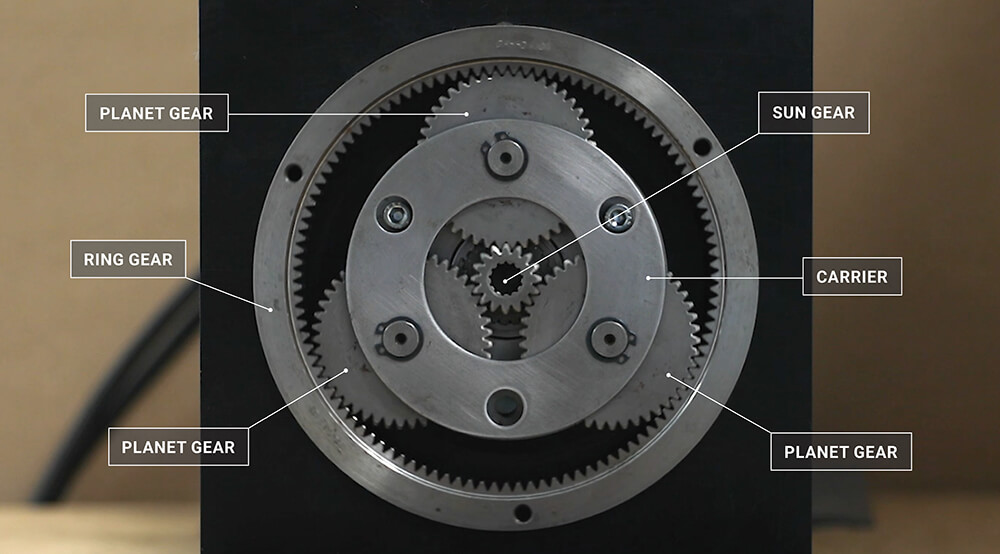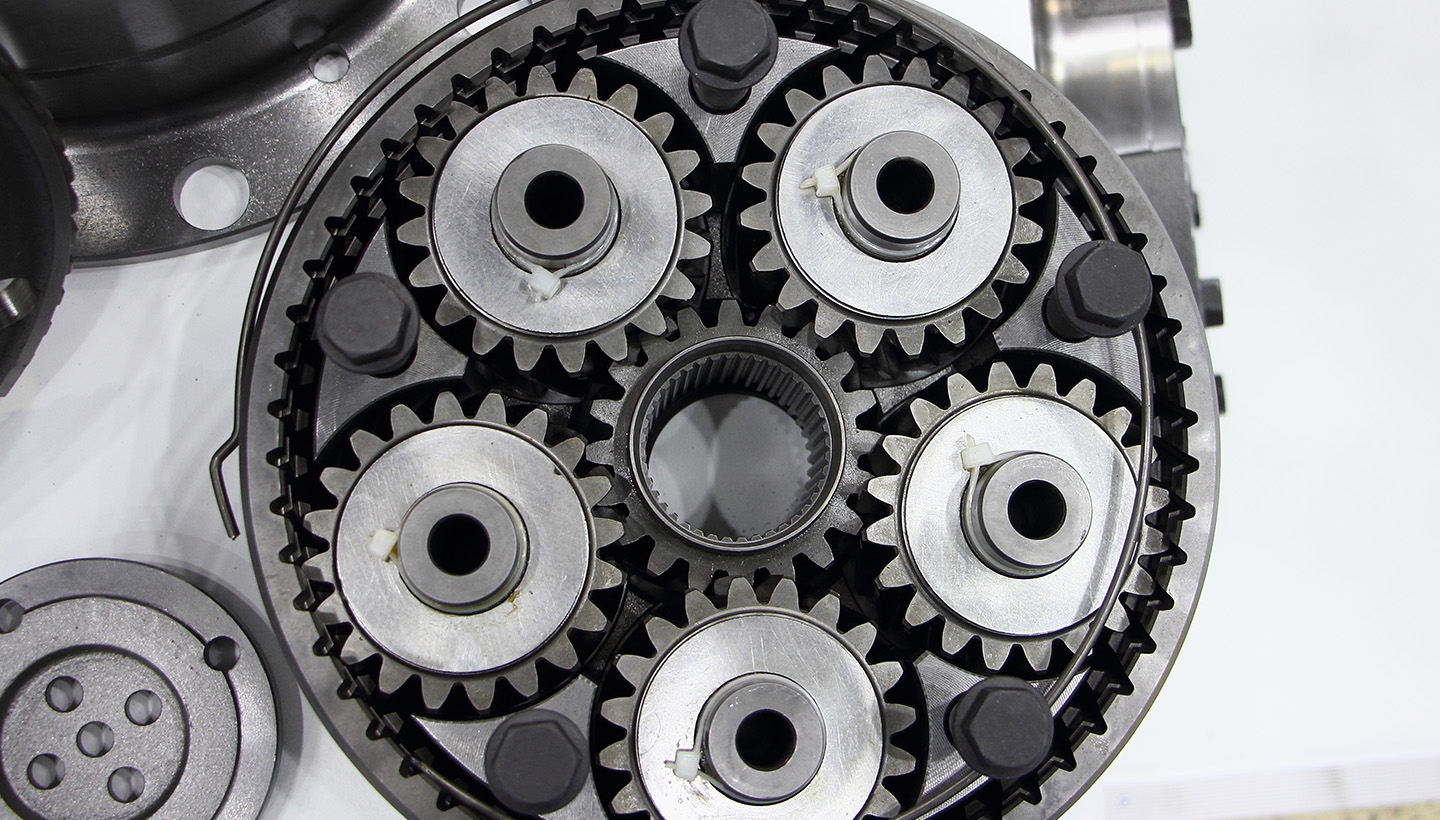Product Description
P Series Epicyclic Cast Iron Ce Approved Steel Flange Mounted Tube Mill Metallurgy Housing Planetary Gearbox Speed Reducer for Roller Presses
P series planetary gearbox with good prices
1.P Series Planetary Gear Units is designed according to the involute planetary gear transmission with inner mesh,outer mesh and divided power employed reasonably.
2.P series planetary gear unit has the feature of light weight , small volume, high transmission ratio,
high efficiency, smooth rotation, low noise and good applicability.
3.P series is widely used in industries such as metallurgy, mining, hoisting and transportation, electrical power, energy resources, construction and building materials, light industry and traffic.
| Application: | Motor, Electric Cars, Motorcycle, Machinery, Marine, Toy, Agricultural Machinery, Car |
|---|---|
| Hardness: | Soft Tooth Surface |
| Installation: | 90 Degree |
| Layout: | Helical Gearbox |
| Gear Shape: | Conical – Cylindrical Gear |
| Step: | Stepless |
| Samples: |
US$ 9999/Piece
1 Piece(Min.Order) | |
|---|

How do epicyclic gear systems provide different gear ratios within a compact design?
Epicyclic gear systems, also known as planetary gear systems, offer the advantage of providing different gear ratios while maintaining a compact design. Here’s a detailed explanation:
Epicyclic gear systems achieve different gear ratios through the interaction of the sun gear, planet gears, and ring gear. The arrangement and engagement of these gears determine the resulting gear ratios. Here’s how it works:
1. Sun Gear and Ring Gear Sizes:
The gear ratio is influenced by the relative sizes of the sun gear and the ring gear. The number of teeth on these gears determines their effective radius and, consequently, the gear ratio. For example, a larger sun gear or a smaller ring gear will result in a higher gear ratio, providing gear reduction.
2. Planet Gear Engagement:
The planet gears in an epicyclic gear system engage with both the sun gear and the ring gear. The number of teeth on the planet gears affects the gear ratio as well. By altering the number of teeth on the planet gears, different gear ratios can be achieved. Increasing the number of teeth on the planet gears compared to the sun gear or the ring gear will result in a higher gear ratio.
3. Gear Arrangement:
The arrangement of the sun gear, planet gears, and ring gear also plays a role in providing different gear ratios. In a basic epicyclic gear system, the planet gears are evenly spaced around the sun gear and engage with the internal teeth of the ring gear. However, by modifying the arrangement, such as using multiple sets of planet gears or incorporating additional gears, more complex gear ratios can be achieved.
4. Multiple Stages:
Epicyclic gear systems can also utilize multiple stages to further expand the range of available gear ratios. Multiple stages involve connecting multiple sets of epicyclic gear systems in series. Each stage can have its own gear ratio, and by combining the gear ratios of each stage, a wide range of overall gear ratios can be achieved.
5. Compact Design:
Epicyclic gear systems offer a compact design due to the coaxial arrangement of the sun gear, planet gears, and ring gear. The planet gears are mounted on a carrier, which revolves around the sun gear while engaging with the ring gear. This arrangement allows for a high gear reduction or multiplication within a relatively small space, making epicyclic gears well-suited for applications where size and weight constraints are critical.
Overall, through the careful selection of gear sizes, gear engagement, gear arrangement, and the possibility of multiple stages, epicyclic gear systems provide different gear ratios while maintaining a compact design. This versatility in gear ratios makes them highly adaptable to a wide range of applications across various industries.

What is the purpose of using epicyclic gears in robotics and automation?
Epicyclic gears, also known as planetary gears, serve several purposes in robotics and automation. Here’s a detailed explanation:
1. Compact Size:
Epicyclic gears offer a compact and space-efficient solution for transmitting torque and achieving different speed ratios. The arrangement of multiple gears within a single gear system allows for a high gear reduction or speed increase in a relatively small package. This compact size is particularly advantageous in robotics and automation applications where space is limited.
2. High Torque Transmission:
Epicyclic gears are capable of transmitting high torque levels due to their design. The load is distributed among multiple planet gears, allowing for a higher torque capacity compared to other gear types. This high torque transmission capability makes epicyclic gears suitable for applications that require precise and powerful motion control, such as robot joints and industrial automation systems.
3. Speed Control:
The arrangement of gears in an epicyclic gear system allows for precise control over speed ratios. By manipulating the input and output gears, different gear ratios can be achieved, enabling speed control and gear reduction or amplification. This speed control capability is essential in robotics and automation to achieve desired motion profiles and optimize system performance.
4. Backlash Minimization:
Epicyclic gears can be designed to minimize backlash, which is the angular clearance between gear teeth when there is no load applied. Backlash can introduce inaccuracies and delays in robotic and automation systems. By carefully designing gear tooth profiles and controlling gear meshing, epicyclic gears can reduce backlash, improving precision and responsiveness in motion control applications.
5. Efficiency and Durability:
Epicyclic gears can achieve high efficiency levels due to their rolling contact between gear teeth. This rolling contact results in less friction and energy loss compared to sliding contact gears. Additionally, the load distribution among multiple gear teeth reduces the stress on individual teeth, enhancing durability and prolonging the gear system’s lifespan.
6. Modular Design:
Epicyclic gears offer a modular design that allows for easy integration into robotic and automation systems. They can be combined with other mechanical components, such as motors and actuators, to create compact and efficient power transmission systems. The modular nature of epicyclic gears simplifies system design, assembly, and maintenance.
7. Reduction of Motor Torque Ripple:
In certain robotic applications, particularly those requiring smooth and precise motion, epicyclic gears can be utilized to reduce motor torque ripple. By incorporating epicyclic gears with appropriate gear ratios, the torque ripple generated by the motor can be smoothed out, resulting in smoother and more uniform motion.
In summary, the purpose of using epicyclic gears in robotics and automation is to provide a compact size, high torque transmission, speed control, backlash minimization, efficiency and durability, modular design, and reduction of motor torque ripple. These advantages make epicyclic gears a valuable choice for achieving precise motion control, optimizing system performance, and enhancing the overall efficiency and reliability of robotic and automation systems.

Can you explain the concept of planetary gear sets in epicyclic systems?
In epicyclic gear systems, planetary gear sets play a fundamental role. Here’s a detailed explanation of the concept:
1. Definition:
A planetary gear set consists of three main components: a central sun gear, multiple planet gears, and an outer ring gear, also known as the annular gear. The planet gears are typically mounted on a carrier, which allows them to rotate around the sun gear.
2. Gear Engagement:
The teeth of the planet gears mesh with both the sun gear and the annular gear. The sun gear is positioned at the center and is surrounded by the planet gears. The annular gear has internal teeth that engage with the planet gears, while its external teeth provide the outer boundary of the gear system.
3. Gear Motion:
The motion of a planetary gear set involves a combination of rotational and orbital motion. When the sun gear rotates, it causes the planet gears to rotate around their own axes while simultaneously orbiting around the sun gear.
4. Gear Ratios:
Planetary gear sets offer various gear ratios depending on how the components are held or driven. The gear ratio is determined by the number of teeth on the gears and the arrangement of the gear engagement. By fixing one component and driving another, different gear ratios can be achieved.
5. Gear Functions:
The arrangement and motion of planetary gear sets allow for a wide range of functions in epicyclic systems, including:
- Speed Reduction: By fixing the sun gear and rotating the carrier or annular gear, the output speed can be reduced compared to the input speed.
- Speed Increase: By fixing the carrier or annular gear and rotating the sun gear, the output speed can be increased compared to the input speed.
- Directional Changes: Changing the gear engagement arrangement allows reversing the direction of rotation between the input and output shafts.
- Torque Multiplication: The gear ratios in a planetary gear set enable torque multiplication, providing mechanical advantage between the input and output.
- Braking: By holding specific components, such as the sun gear or the carrier, the gear system can act as a brake, preventing rotation or controlling the speed of the output shaft.
Planetary gear sets are widely used in various applications, including automotive transmissions, gearboxes, power tools, and robotics. Their compact size, versatility in gear ratios, and ability to perform different functions make them essential components in many mechanical systems.


editor by CX 2023-09-11